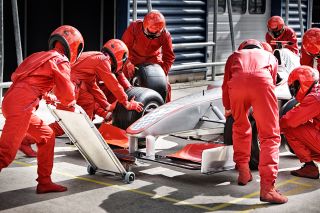Motivation
How to Foster and Sustain Team Motivation
Harness the power of psychological needs within your team.
Posted May 6, 2024 Reviewed by Jessica Schrader
Key points
- Enhancing your teammates' psychological needs promotes better team motivation.
- Monitor how leadership styles, reward systems, and external pressures affect your team's motivation.
- Better support from your external environment may be required for healthy internal team motivation.

Do you belong to a work or sports team? Do the members of your team share the same motivation or goals or are they misaligned? What could you do to get everyone in your team to be more aligned and adopt the right type of motivation that will lead your team to succeed?
We often hear about how team leaders and organisations should structure, lead, and reward teams for them to be effective. But have we paid enough attention to what team members can contribute to their own internal team dynamics?
I recently co-authored an article with Simon Grenier from the Université de Montréal and Thomas O’Neill from the University of Calgary that might help you. In it, we present a model, based on self-determination theory, from which we can derive a simple key strategy to foster healthy team motivation: Ensuring the satisfaction of every team member’s psychological needs. Here’s how it works:
Supporting Psychological Needs
As a team member, you can help foster high autonomous team motivation (that is, motivation based on meaning and enjoyment toward team activities) by supporting your teammates’ needs for autonomy, competence, and relatedness. For example, you can provide your teammates with choices and constructive feedback, and promote the inclusion of all points of view. If enough teammates adopt these supportive behaviors, it will create a virtuous cycle of interactions that leads your team to develop norms of support over time.
Easier said than done right? Yes. What do you need for supportive norms to develop? First, you must consider the initial motivation of team members at a team’s inception or during the formative phase where team members get to know each other and learn about what they will work on together. If team members are primarily motivated by rewards or status (i.e., controlled motivation), they are less likely to support the needs of their teammates. If they are motivated by meaning and enjoyment, they are more likely to support their teammates’ needs. Selecting team members with the right motivation or fostering that initial motivation through good task design and leadership can make a difference.
Once the cogs are in motion within the team, here is what is likely to happen. First, team members’ motivations are likely to become more similar over time. If you satisfy needs, individual motivations are likely to converge towards becoming more autonomous. In other words, when members’ needs are supported, they are more likely to internalize team goals and focus on their importance and on enjoying the process of working on goal accomplishment. If you thwart needs, individual motivations are likely to converge toward becoming more controlled or losing motivation altogether.
Second, members will forge an identity to the team if autonomous motivation is cultivated. In other words, when members pursue team goals out of meaning and enjoyment, they are likely to make their team an important aspect of their self-identity, which in turn further fosters the endorsement of team norms and goals.
Third, working for the same reasons (i.e., motivations) and sharing a common identity is likely to facilitate both explicit and implicit coordination that is essential to team performance. Explicit coordination includes discussing and agreeing on strategies and logistics, while implicit coordination involves monitoring each other and adapting to others’ behaviors without explicit communication (think of a flock of birds or a school of fish moving in unison).
Finally, look at how the external context of a team is likely to influence internal collective motivation. Is your team under the leadership of a tyrant leader who can undo any effort at supporting needs within your team or worse, serves as a role model for team members to thwart each other’s psychological needs? Is your team contingently rewarded in a way that primarily encourages controlled forms of motivation within your team? Is your team under high pressure or is it struggling to survive? These can negatively impact both the motivation of team members and your team’s internal support dynamics. Advocating for better external support from your external environment (e.g., your organization) might be required to ensure you can maintain healthy internal team motivation.
This post was co-authored with Simon Grenier from the Université de Montréal.
References
Grenier, S., Gagné, M., & O'Neill, T. (2024). Self-determination theory and its implications for team motivation. Applied Psychology, 1–33. https://doi.org/10.1111/apps.12526


